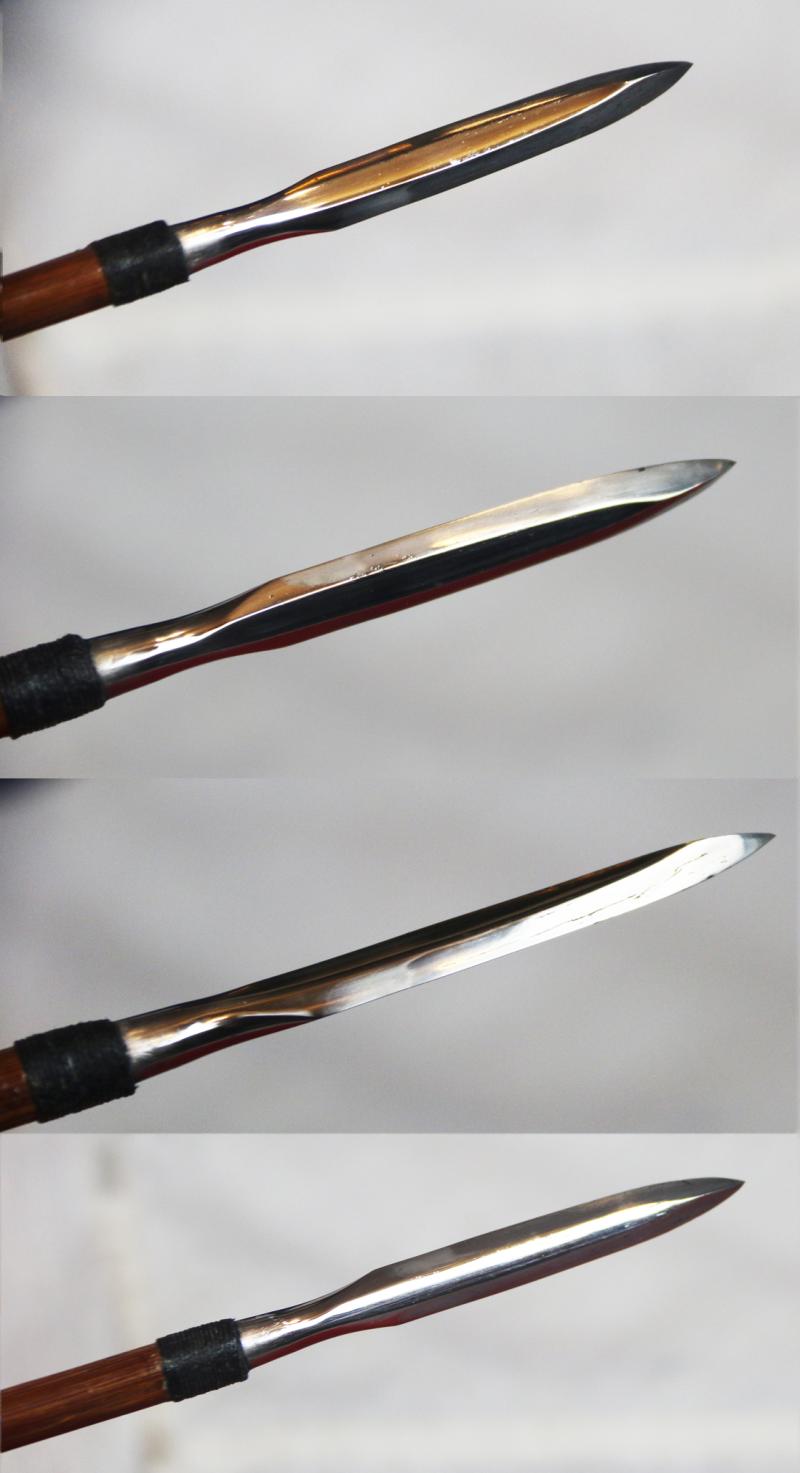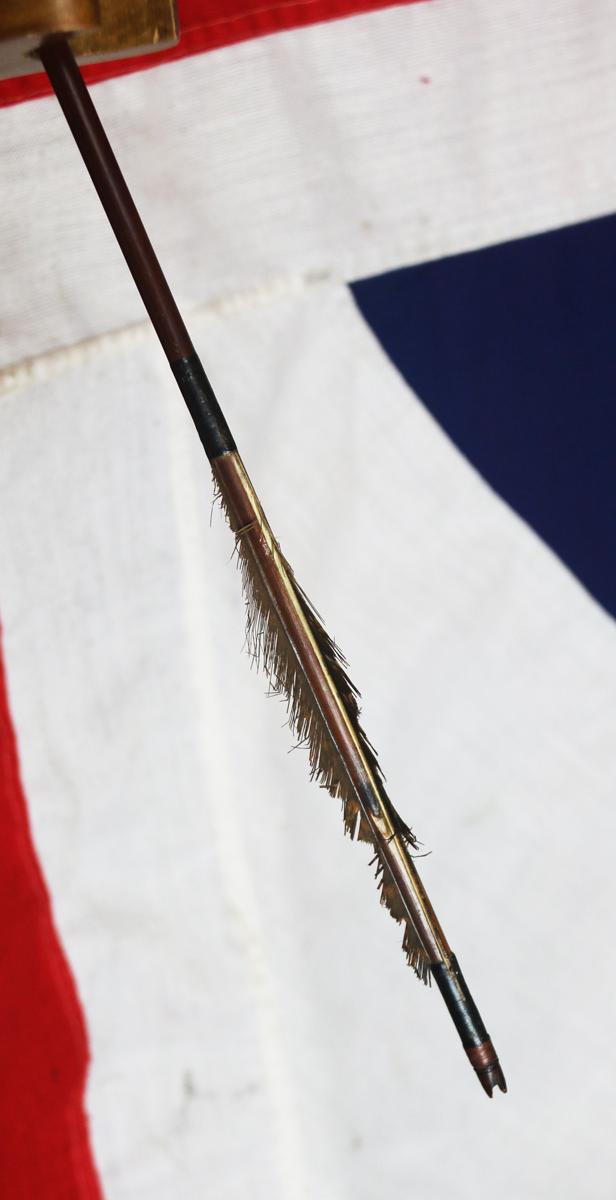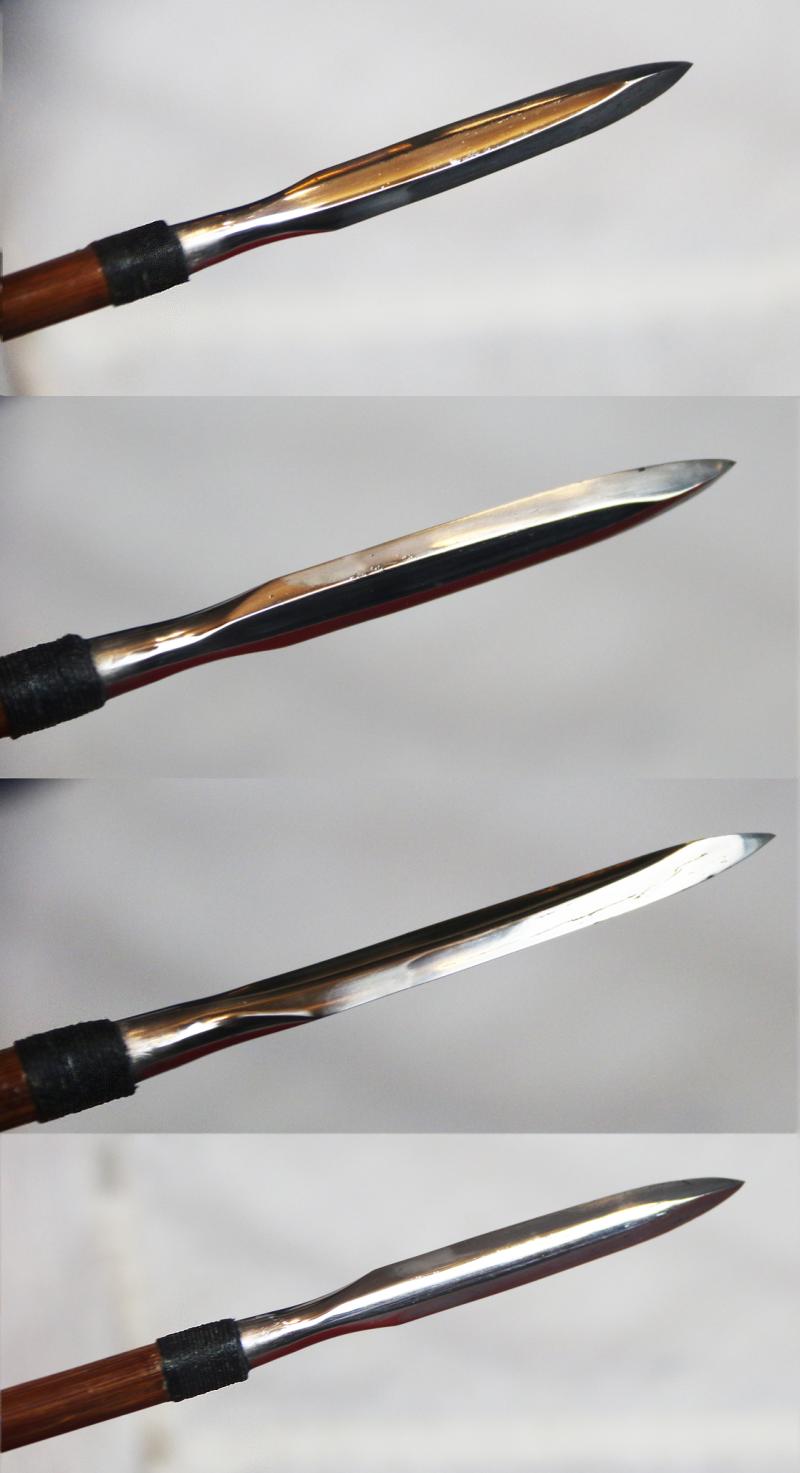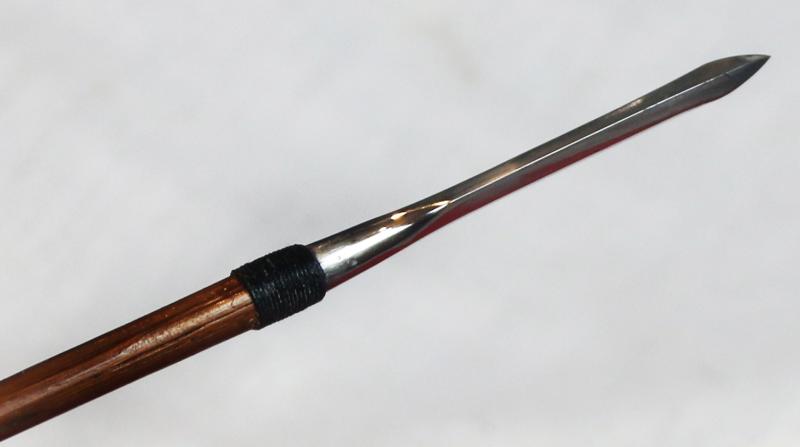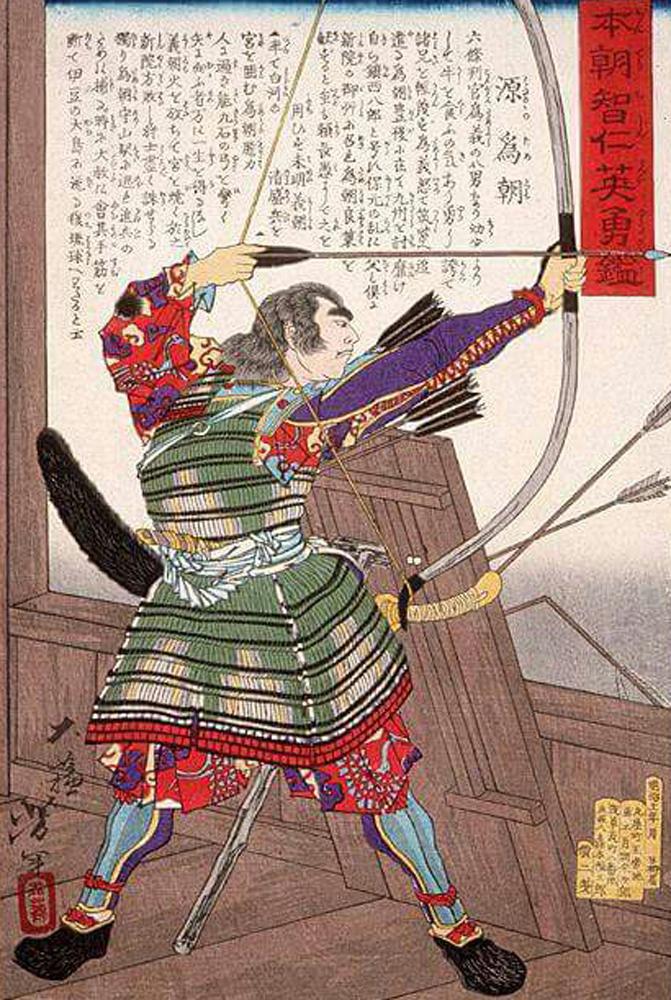A Delightful & Beautiful Early to Mid Edo Period 1598-1863 Samurai War Arrow. A Long Bladed Armour Piercing Tagari-Ya, With Yadake Bamboo haft, & Sea Eagle Feather Flights and a Traditional Tamahagane Tempered Steel Head In Stunning Polish with Hamon
Yanagi-Ha (willow leaf) Form. With original traditional eagle feathers, probably the large edge-wing feathers of a Japanese sea eagle.
The armour pierceing arrow tip, of yanagi-ha form, that is swollen at the tip to have the extra piercing power to penetrate armour and helmets {kabuto}, is a brightly polished, traditional tamagahane steel hand made, by a sword smith, long arrow head, originally hand made with folding and tempering exactly as would be a samurai sword blade, possibly signed on the tang under the binding but we would never remove it to see. The Edo period early eagle feathers are now slightly worn.
It is entirely indicative of the Japanese principle that as much time skill and effort be used to create a single 'fire and forget' arrow, as would be used to make a tanto or katana. A British or European blacksmith might once have made ten or twenty arrows a day, a Japanese craftsman might take a week to make a single arrow, that has a useable combat life of maybe two minutes, the same as a simplest British long bow arrow.
The Togari-Ya or pointed arrowheads look like a miniature version of a long Yari (spear) and were used only for war and are armour piercing arrows . Despite being somewhat of a weapon that was 'fire and forget' it was created regardless of cost and time, like no other arrow ever was outside of Japan. For example, to create the arrow head alone, in the very same traditional way today, using tamahagane steel, folding and forging, water quench tempering, then followed by polishing, it would likely cost way in excess of a thousand pounds, that is if you could find a Japanese master sword smith today who would make one for you. Then would would need hafting, binding, and feathering, by a completely separate artisan, and finally, using eagle feathers as flights, would be very likely impossible. This is a simple example of how incredible value finest samurai weaponry can be, items that can be acquired from us that would cost many times the price of our original antiques in order to recreate today. Kyu Jutsu is the art of Japanese archery.The beginning of archery in Japan is pre-historical. The first images picturing the distinct Japanese asymmetrical longbow are from the Yayoi period (c. 500 BC – 300 AD).
The changing of society and the military class (samurai) taking power at the end of the first millennium created a requirement for education in archery. This led to the birth of the first kyujutsu ryūha (style), the Henmi-ryū, founded by Henmi Kiyomitsu in the 12th century. The Takeda-ryū and the mounted archery school Ogasawara-ryū were later founded by his descendants. The need for archers grew dramatically during the Genpei War (1180–1185) and as a result the founder of the Ogasawara-ryū (Ogasawara Nagakiyo), began teaching yabusame (mounted archery) In the twelfth and thirteenth century a bow was the primary weapon of a warrior on the battlefield. Bow on the battlefield stopped dominating only after the appearance of firearm.The beginning of archery in Japan is pre-historical. The first images picturing the distinct Japanese asymmetrical longbow are from the Yayoi period (c. 500 BC – 300 AD).
The changing of society and the military class (samurai) taking power at the end of the first millennium created a requirement for education in archery. This led to the birth of the first kyujutsu ryūha (style), the Henmi-ryū, founded by Henmi Kiyomitsu in the 12th century. The Takeda-ryū and the mounted archery school Ogasawara-ryū were later founded by his descendants. The need for archers grew dramatically during the Genpei War (1180–1185) and as a result the founder of the Ogasawara-ryū (Ogasawara Nagakiyo), began teaching yabusame (mounted archery) Warriors practiced several types of archery, according to changes in weaponry and the role of the military in different periods. Mounted archery, also known as military archery, was the most prized of warrior skills and was practiced consistently by professional soldiers from the outset in Japan. Different procedures were followed that distinguished archery intended as warrior training from contests or religious practices in which form and formality were of primary importance. Civil archery entailed shooting from a standing position, and emphasis was placed upon form rather than meeting a target accurately. By far the most common type of archery in Japan, civil or civilian archery contests did not provide sufficient preparation for battle, and remained largely ceremonial. By contrast, military training entailed mounted maneuvers in which infantry troops with bow and arrow supported equestrian archers.
Mock battles were staged, sometimes as a show of force to dissuade enemy forces from attacking. While early medieval warfare often began with a formalized archery contest between commanders, deployment of firearms and the constant warfare of the 15th and 16th centuries ultimately led to the decline of archery in battle. In the Edo period archery was considered an art, and members of the warrior classes participated in archery contests that venerated this technique as the most favoured weapon of the samurai. In the gallery is from an edo exhibition of archery that shows a tagari ya arrow pierced completely through, back and front, an armoured steel multi plate kabuto helmet.
Every item is accompanied with our unique, Certificate of Authenticity. Of course any certificate of authenticity, given by even the best specialist dealers, in any field, all around the world, is simply a piece of paper,…however, ours is backed up with the fact we are the largest dealers of our kind in the world, with over 100 years and four generation’s of professional trading experience behind us
Code: 25512
645.00 GBP



